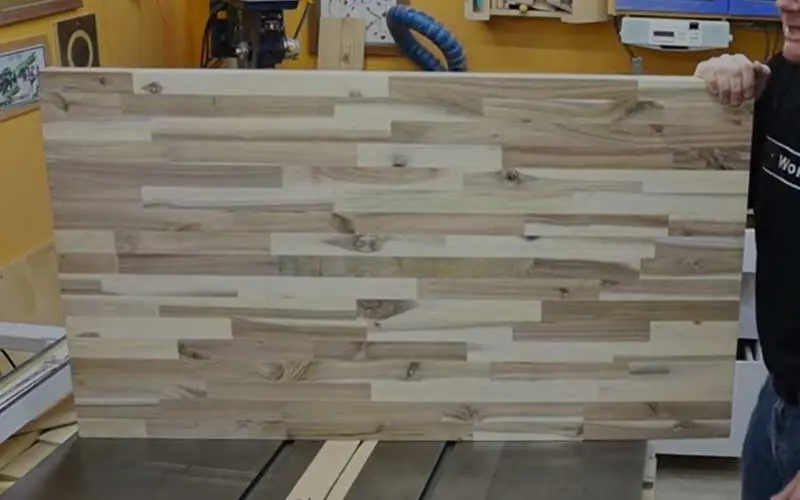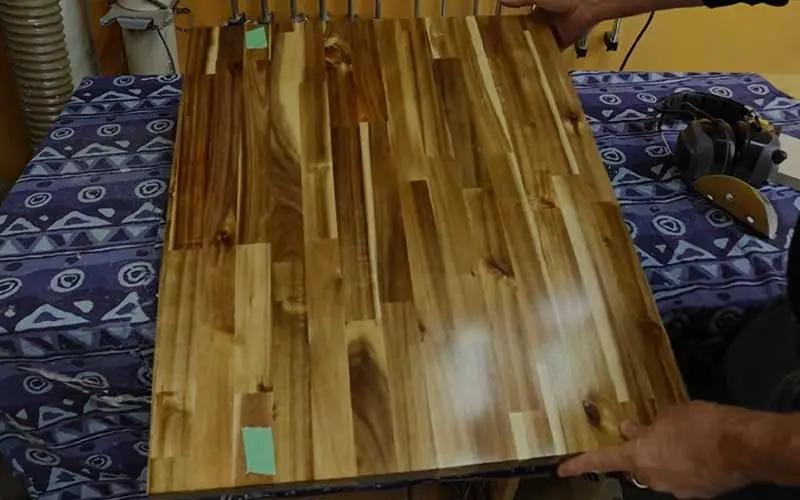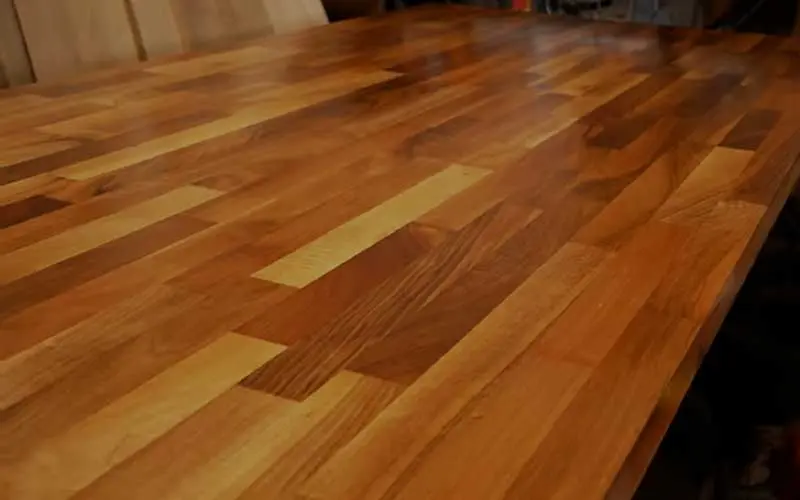There are many types of wood available on the market, but acacia wood is becoming a popular choice for outdoor furniture and other home décor items.
Acacia wood has many benefits, such as its beautiful appearance and its durability. However, there are also some disadvantages to using acacia wood.
We will show you the cons of using acacia wood so that you can make an informed decision about whether or not it is the right choice for your needs.
Let’s now discuss some of the disadvantages of acacia wood furniture over other exotic hardwoods. Why do woodworkers sometimes overlook acacia wood?
Table of Contents
Disadvantages of Acacia Wood You Should Consider
1. Acacia wood is sensitive to temperature variations
Although Acacia is one of the hardest woods, it doesn’t hold up well under wide temperature variations. For instance, Acacia easily cracks in hot temperatures.
If you live in a climate with extreme temperatures, it’s important to consider whether this type of material will work well for your needs.
In general, acacia is an extraordinarily durable wood; however when you expose acacia wood to direct heat, the wood often cracks or bows.
Woodworkers have found a way to reduce this disadvantage by using a glue that expands and contracts with the wood. This helps to keep the furniture looking good for many years.
If you are not choosing that solution, to prevent crack issues, we suggest you rotate any outdoor furniture every few weeks, ensuring that one area doesn’t get overexposed.
For indoor furniture, be mindful of heater vents and the furniture’s proximity to sunny areas.
Studies show that high temperatures damage the fibers in acacia lumber, causing it to crack with ease. The problem is even worse in regions that experience significant temperature fluctuations over a single day.
For instance, acacia furniture will break down easily in regions with hot daytime temperatures and freezing night temperatures.
Acacia wood also swells in highly humid or rainy/snowy conditions. This makes acacia furniture unsuited to outdoor conditions.

If it’s the only material you have for outdoor furniture, rotate the furniture to avoid over-exposure. Additionally, avoid direct exposure to heat sources, such as sunlight and the fireplace.
2. Acacia wood requires significant maintenance
Acacia wood items require significant maintenance to maintain their appearance and physical characteristics.
In fact, acacia wood requires a little more maintenance than other types of furniture. You will need to clean and polish it regularly to keep it looking its best.
If you don’t have the time or inclination to do this, then acacia wood may not be the best choice for you.
You must periodically wipe acacia furniture with a slightly moistened cloth to eliminate dust and prevent the dirt. Otherwise, the surfaces can become too dry and begin to track.
However, you can’t just use any kind of detergents to take care of your acacia wood.
For instance, silicon and ammonia-based cleaning products can’t be used as they contain properties that can cause acacia wood to become too dry and crack.
That’s why you need to wipe the furniture with a warm soapy water solution. Finally, you must oil your acacia wood furniture with selected preservatives in order to prevent warping.
Many experts recommend pigmented finishing oil over transparent oil to provide better UV protection. This is a very professional solutions that just few people are willing to provide.
3. Irregular, unpredictable grain structure
Some people love the unpredictable, irregular grain structure of acacia wood. However, many people find it complex and difficult to fit into existing décor.
The grain structure of acacia wood is quite unique and can be seen as a disadvantage to some people.
The wavy grain can make it difficult to achieve a smooth finish, and the knots in the wood can be quite visible.
Although no wood is perfect, many woodworkers would rather work with a straight and predictable grain pattern. For instance, acacia wood is characterized by many knots.
Wood knots come in many forms, though the three main categories are sound (tight), unsound (loose), and encased knots.
Whichever type, these knots affect the continuity of wood fibers, sometimes even breaking the fibers.
Knots have two major impacts on woodworking. First, they weaken solid wood. The knot area becomes a weak link.
This makes knotted wood pieces unideal for applications that expose the lumber to significant loads, such as making wood bed frames.

Secondly, irregular grain structures make it difficult to fit furniture into any existing décor. So you must be very careful not to disrupt the existing harmony.
Read: What is a Rick of Firewood
4. Acacia wood is very heavy and very hard
Acacia wood is rated 2,300 on the Janka hardness test, making it harder than hickory. While this is good for durability, the extreme hardness makes the wood very difficult to work.
For instance, you need power tools to cut some hardwoods as you cannot cut them with hand tools. There is no doubt that acacia wood is very difficult to cut.
It’s even harder to cut than maple, one of the hardest woods Additionally, Acacia is rather heavy. It’s not uncommon for acacia wood furniture pieces to weigh over 50 pounds.
If you plan on moving the furniture often, these heavy items may prove problematic
Working with heavy wood types is a challenge because you need to lift wood pieces frequently when sawing, cutting, smoothing, joining.

Being so heavy means that transporting it is also a massive challenge. Keep in mind that Acacia isn’t native to North America. It’s mostly imported.
5. Acacia wood is expensive
Many woodworkers and their clients are not fans of acacia timber because, despite the many disadvantages, it’s still very expensive. However, it’s worth noting that “expensive” is relative.

For instance, Acacia is cheaper than other exotic woods like mahogany and rosewood. So, if you’re prepared to pay for mahogany, you won’t have a problem paying for acacia wood.
However, it’s significantly more expensive than most American hardwoods, including maple and oak.
The average price per foot for 4×4 Australian Blackwood acacia is $7.90, with general prices as high as $10.50 per foot.
Meanwhile, soft maple costs about $5 per foot, while hard maple costs about $6/foot. Red oak is even more affordable at about $3/foot.
Sometimes, it makes more sense to go with locally available options, such as oak, rather than spend more on Acacia.
Therefore, you may need an expert in carpentry skills when building your own acacia wood furniture or buy it from someone who does know how to work with it.
The cost of acacia outdoor wood furniture can be high because it is hardwood and requires more time to build than softwoods like pine or cedar.
Final Thoughts
Overall, acacia is a fantastic wood for furniture. However, acacia, like everything else, has its drawbacks.
You’ll need to keep an eye on the sunlight and heat sources around your furnishings. This wood may also need to be oiled on occasion.
Of course, there are some relative issues. Acacia wood is more expensive than conventional American hardwoods due to its exotic classification and several benefits.
Furthermore, acacia furniture is made of robust and dense wood. So those are some of the disadvantages of acacia wood. You may be unconcerned about any of these difficulties.
The pros and negatives vary depending on the scenario, but it is always beneficial to be as educated as possible.
Leave a Reply